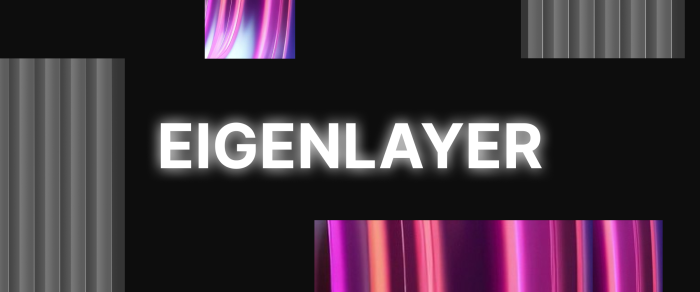What is a Smart Contract And How Does it Work?
Those involved in the cryptocurrency space may have often heard of the term “smart contract.” The term smart contract refers to a protocol based on blockchain technology that regulates the movement of digital currencies or assets between parties under specific conditions. In their code, they lay out specific instructions for handling how funds may be transferred between users. After being programmed, a smart contract can do anything that a regular program can, including communicating with other programs, making decisions, and storing information about its environment. Nonetheless, smart contracts differ from traditional electronic transactions because they don’t need to be authorized by anyone (the middleman). Moreover, a protocol is a set of rules (for computer communication) that enforce compliance.
A smart contract often comprises codes linked to moving money from person A to person B based on whether or not specific conditions are satisfied, such as when a bet or escrow is completed. Each computer with a full client has a copy of every transaction done thus far, allowing them to all agree on whether the input meets the existing requirements for the transaction to take place.
One prevalent misunderstanding concerning smart contracts is that, like most other programs, they can only execute on a single machine at a time. This is untrue because, unlike conventional programs, smart contracts execute concurrently on thousands of computers. Additionally, because you require the consent of the majority of computers, it is challenging to exploit smart contracts. The fact that these transactions are open to the public allows everyone to verify the rules. However, only those designated as validators may execute them successfully since they have complete control over all ensuing transactions, which can be confirmed by comparing their hash functions to those of earlier blocks’ hashes.
How do they work?
The purpose of smart contracts is to ensure that an agreement is adhered to. Using an algorithm, they process information, assign a value, and then execute code in accordance with the initial conditions. The tamper-proof nature of these programs makes them ideal for deployment. Additionally, smart contracts may also be used as multi-party agreements, in which the event is determined by the agreement of two or more parties. An agreement’s obligations or terms can be enforced automatically by smart contracts. Furthermore, they can be used to create digital assets, store data about applications and entities, and serve as a trustworthy source for arbitrary applications.
Computer scientist Nick Szabo coined “smart contracts” in 1994. He saw modular components with well-defined interactions between them as building blocks that could be assembled to form increasingly complicated contractual arrangements. The concept was put on hold until 2009, when it was revived by Satoshi Nakamoto, one of the anonymous creators of Bitcoin, which employed blockchain technology to facilitate payments without third parties‘ involvement. Blockchain, a global network for keeping track of transactions that don’t need a third party to confirm or safeguard, was a major advance. Every transaction may be independently validated in a public ledger, managed by Internet-connected nodes operating the blockchain.
What are the benefits of Smart Contracts?
Since no single computer or entity has complete control over the system, fraud may be reduced. The network participants agree to carry out transactions that are immutably recorded. Additionally, they don’t require a middleman like a bank. Smart contracts are used to evaluate whether requirements are satisfied before payment is issued. Smart contracts enable organizations to save time and money on third parties by eliminating the need for humans to do operations that would otherwise take significantly longer to execute. They are also more secure since they cannot be changed once deployed because a third party does not manage them. They also eliminate the possibility of human mistakes and have an audit trail.
What are some problems with Smart Contracts?
Smart contracts are built with the usage of computer codes. Therefore, there is always a potential that they will include bugs.
Because specific computers on the blockchain network (especially older ones) won’t be able to handle running such complicated programs, the manner that smart contracts operate may also be sluggish. As a result, it might not be practical to use them for activities that call for quick execution. Furthermore, the fact that they operate under fixed, predetermined parameters restricts their flexibility.
What are some examples in use today?
The negotiation and signing of insurance policies are only two examples of the paper-based legal procedures that smart contracts are already replacing.
They can be utilized in the financial sector to design a system that enables international trade without the need for banks or centralized control. As fewer middlemen are engaged in the trade, this might result in cheaper fees for both sides.
What are some applications of smart contracts?
The following are some instances of smart contracts that are currently in use:
– Property Title Deed Smart Contracts: Users can program agreements to make payments automatically on predetermined dates and amounts based on a selected property. An encrypted property description controls this process.
– Insurance: Using real-time data feeds and automatic payment triggers when predetermined requirements are satisfied, insurance firms may provide consumers with automated claim processing services.
– Loan Origination: Borrowers request loans, which are then reviewed by underwriters using automated workflows and digital signatures to determine if funds are available. A transfer of money from a bank account or the creation of a digital loan number will be initiated after the system has determined the loan is appropriate for funding.
– Trade Execution: Financial firms develop automated securities trading algorithms that track the markets and place deals in accordance with guidelines established by people.
– Escrow Accounts: Conventional escrow accounts include depositing both parties’ money with a third party, who will only release the funds if specific requirements are satisfied. It is possible to create smart contracts to withdraw funds from an escrow account at particular periods.
– Voting: With smart contracts, votes may be cast safely online without the risk of intervention from other parties since they are irrevocable after they have been submitted by users from all over the world.
In addition, they are used for devices that make small transactions over the Internet of Things (IoT). For illustration, devices equipped with solar panels could sell energy back to the grid without requiring an intermediary during peak periods. Using an automated system involving vehicles that communicate and are compatible with one another, a car would be able to pay for its tolls automatically.
Apart from the above, IBM has successfully used blockchain technology in several industries. Blockchain has been used to speed up and improve international trade, promote supply chain transparency, and foster trust between merchants and suppliers.
What is the future of smart contracts?
We are still at the beginning of the smart contract era. Since this is a relatively new technology, it has not yet reached its full potential. As smart contracts continue to evolve at a rapid pace, blockchain experts predict their applications will become more widespread.
The potential of smart contracts to increase connection amongst IoT devices by enabling them to transact with one another through automated agreements autonomously is one of its most interesting prospective applications.



